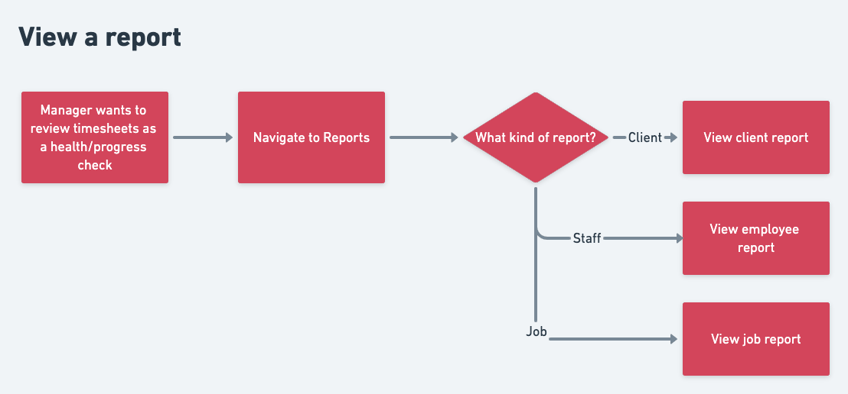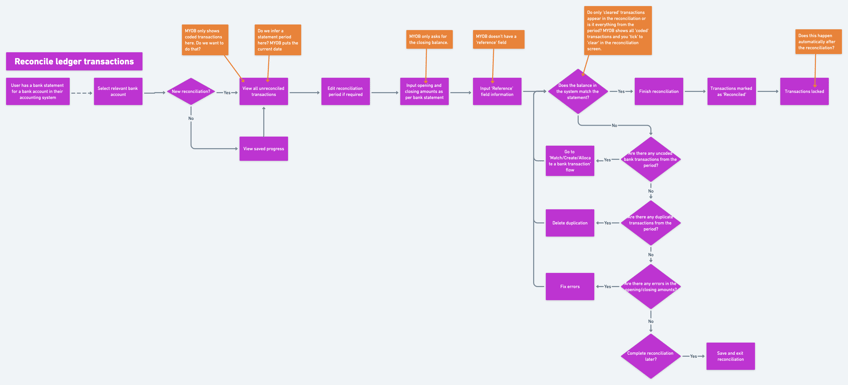Introduction
User journey mapping is the process of generating a flow diagram that details the steps a user takes to complete a specific activity. These activities can range from very simple and straightforward to complex and technical. By clearly defining each step, user journey mapping surfaces assumptions from the team about how they expect a user to interact with the product, and highlights pain points and areas for improvement.
Because flow diagrams are quick and easy to create and edit, user journey maps are a useful tool for uncovering product complexity before artefacts like wireframes and low-fidelity prototypes are created.
People
User journey maps are typically created by a UX Designer in consultation with subject matter experts or real users.
We like to include engineers at key points throughout the mapping process to spar on work-in-progress, and check that what we’re designing can be achieved within the constraints of the underlying system.
Instructions
Prep
Decide how you would like to generate the user journey map. This is best done through a flowchart tool like Whimsical, or in-person during a white boarding session.
Depending on how well the designer understands the project and its related core concepts, user journey mapping can be done as a real-time collaborative session with subject matter experts.
Method
- Create a heading for each activity that you wish to map out. Ask yourself, "What are the activities that a user is trying to complete with this product?" Organise these roughly into the order in which would occur as someone uses the product.
- Break each activity down into small steps that represent an action from the user. Use rectangles for a process step and a diamond for a decision step. It’s useful to add the driver for why the user has decided to complete this task at the beginning of the flow.
- Connect the steps with arrows to represent how a user would move through the task.
- Complete a flow diagram for each of the tasks, allowing you to uncover which are the complex ones and where you may have questions for engineers, stakeholders, or subject matter experts.




A useful reference for activity mapping
The user journey mapping exercise of breaking down large activities into smaller steps overlaps nicely with activity mapping. We typically use outputs from user journey mapping as seed materials for the activity map. But you could also do it the other way around, or indeed run both processes in a semi-concurrent fashion depending on who’s on your team and how fast you need to move.



